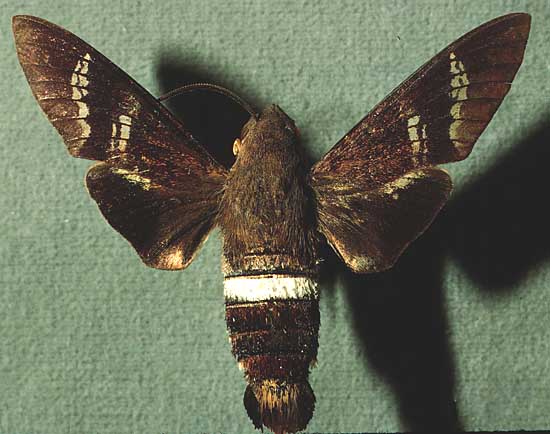
Aellopos fadus male courtesy of Dan Janzen.
This site has been created by Bill Oehlke.
Comments, suggestions and/or additional information are welcomed by Bill.
TAXONOMY:
Family: Sphingidae, Latreille, 1802 |
|
|
Updated as per More, Kitching and Cocucci's Hawkmoths of Argentina 2005, October, 2007 Updated as per All Leps Barcode of Life, October, 2007 Updated as per http://biological-diversity.info/sphingidae.htm (Belize), November 2007 Updated as per Fauna Entomologica De Nicarauga, November 2007 Updated as per The Known Sphingidae of Costa Rica, November 2007 Updated as per personal communication with Jose Monzon (Guatemala); May 2009 Updated as per Sphingidae (Lepidoptera) de Venezuela, Compilado por: Maria Esperanza Chacon; December 2009 Updated as per French Guiana Systematics: Sphingidae; May 15, 2011 Updated as per personal communication with Ann Gordon (Harris Creek, McGregor, McLennan Co., Texas); August 4, 2011 Updated as per personal communication with Ezequiel Bustos (Shilap revta. lepid. 43 (172) diciembre, 2015, 615-631 eISSN 2340-4078 ISSN 0300-5267), January 4, 2016 Updated as per personal communication with Nycolas Lagareiro (Capitolio, Minas Gerais, Brazil, March 28, 2022); March 28, 2022 Updated for Brazil as per Haxaire & Mielke, European Entomologist; October 21, 2019; March 28, 2022 Updated as per personal communication with Anna & Frank West; March 28, 2022 Updated as per Hawk-moths (Lepidoptera: Sphingidae) of Trinidad, West Indies: an illustrated and annotated list; Matthew J.W. Cock; April 6, 2022 |

This site has been created by Bill Oehlke.
Comments, suggestions and/or additional information are welcomed by Bill.
TAXONOMY:
Family: Sphingidae, Latreille, 1802 |
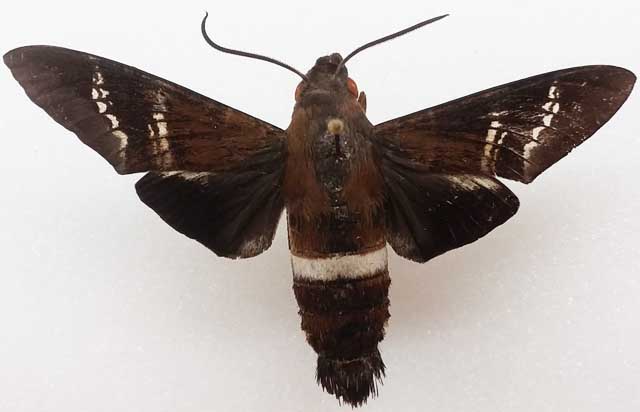
Aellopos fadus 64mm, Frenza Rancho Grande, Rondonia, Brasil,
November, 1991, courtesy of Anna & Frank West
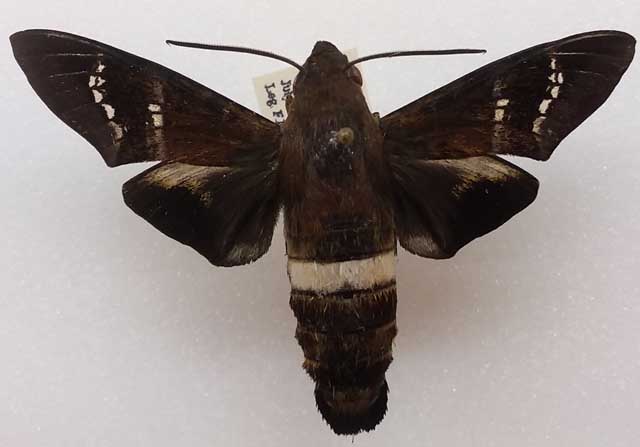
Aellopos fadus 60mm, near Morales, Izabal, Guatemala,
July 2005, 3300ft, courtesy of Anna & Frank West
Rick Gillmore reports, "A. fadus does not exist in Florida. They are not breeding here in Florida."
This species is easily confused with other Aellopos species and some citings may be in error.
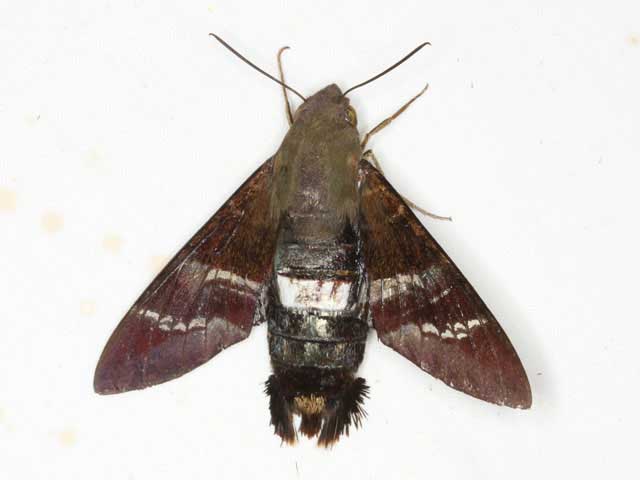
Aellopos fadus, female, Harris Creek, McGregor, McLennan County, Texas,
August 4, 2011, courtesy of Ann Gordon.
The body is brown with a wide white band across the abdomen. The upperside of wings is dark brown; the forewing has two bands of pale spots and lacks a black spot (typical of clavipes) at the end of the cell; the hindwing has a pale patch on the costa and one on the inner margin. Note the double line of white spots in the forewing postmedian area.
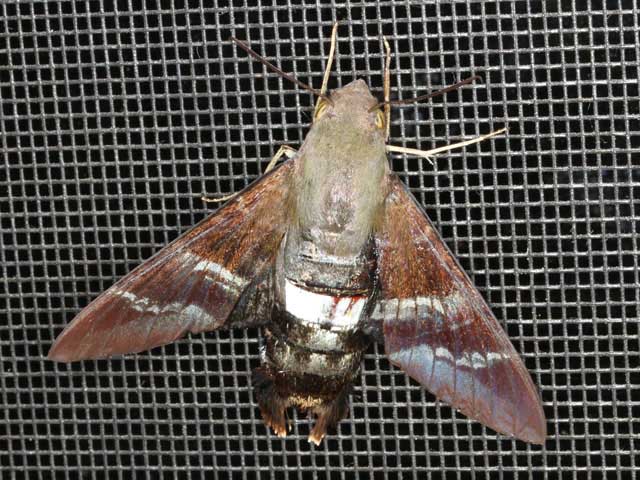
Aellopos fadus, female, Harris Creek, McGregor, McLennan County, Texas,
August 4, 2011, courtesy of Ann Gordon.
In Texas, Arkansas and Florida there is one flight from September-December.
Nycolas Lagareiro reports a March 27-28 flight in Capitolio, Minas Gerais, Brazil.
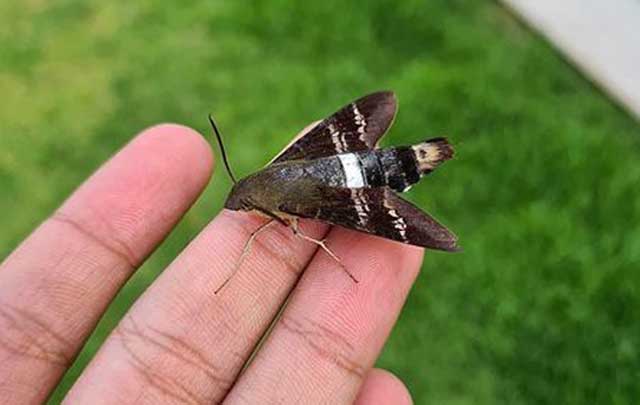
Aellopos fadus, Capitolio, Minas Gerais, Brazil,
March 28, 2022, courtesy of Nycolas Lagareiro.
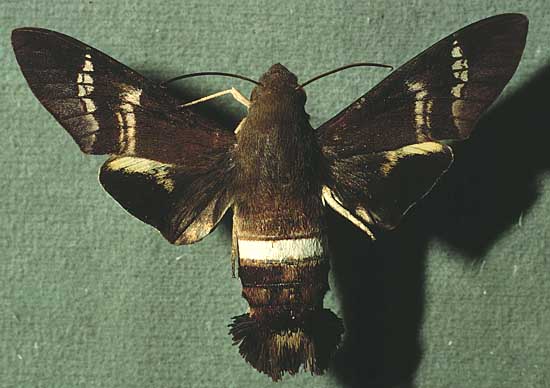
Aellopos fadus female courtesy of Dan Janzen.
There are at least two color morphs, a green form and a much darker, reddish-brown form:

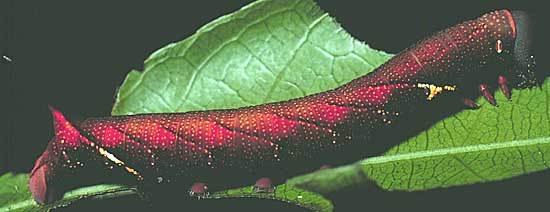
Caterpillars pupate in loose cocoons in shallow underground chambers.Pupae are dark, smooth and shiny, and relatively thin considering the stout appearance of the moth. |  |
Return to U. S. A. Table
Return to Sphingidae Index
Return to Dilophonotini Tribe
Use your browser "Back" button to return to the previous page.
This page is brought to you by Bill Oehlke and the WLSS. Pages are on space rented from Bizland. If you would like to become a "Patron of the Sphingidae Site", contact Bill.
Please send sightings/images to Bill. I will do my best to respond to requests for identification help.
Enjoy one of nature's wonderments: Live Saturniidae (Giant Silkmoth) cocoons.
 Show appreciation for this site by clicking on flashing butterfly to the left. The link will take you to a page with links to many insect sites. |